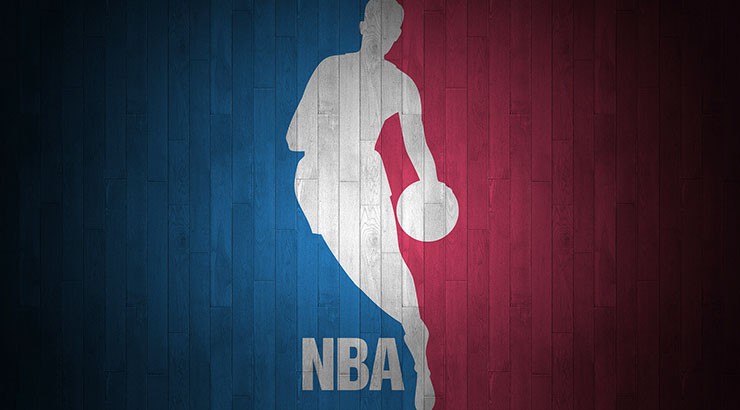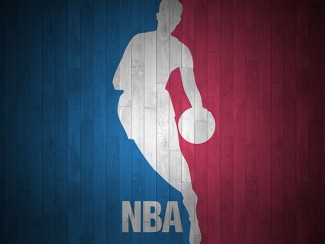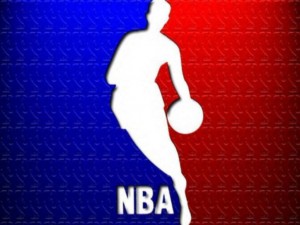
The National Basketball Association (NBA) is the pre-eminent men’s professional basketball league in North America, and is widely considered to be the premier men’s professional basketball league in the world. It has 30 franchised member clubs (29 in the United States and 1 in Canada), and is an active member of USA Basketball (USAB),[1] which is recognized by FIBA (also known as the International Basketball Federation) as the national governing body for basketball in the United States. The NBA is one of the four major North American professional sports leagues. NBA players are the world’s best paid sportsmen, by average annual salary per player.
The league was founded in New York City on June 6, 1946, as the Basketball Association of America (BAA).[4] The league adopted the name National Basketball Association on August 3, 1949, after merging with its rival National Basketball League (NBL). The league’s several international as well as individual team offices are directed out of its head offices located in the Olympic Tower at 645 Fifth Avenue in New York City. NBA Entertainment and NBA TV studios are directed out of offices located in Secaucus, New Jersey.
History
The Basketball Association of America was founded in 1946 by owners of the major ice hockey arenas in the Northeastern and Midwestern United States and Canada. On November 1, 1946, in Toronto, Ontario, Canada, the Toronto Huskies hosted the New York Knickerbockers at Maple Leaf Gardens, in a game the NBA now regards as the first played in its history. The first basket was made by Ossie Schectman of the Knickerbockers. Although there had been earlier attempts at professional basketball leagues, including the American Basketball League and the NBL, the BAA was the first league to attempt to play primarily in large arenas in major cities. During its early years, the quality of play in the BAA was not significantly better than in competing leagues or among leading independent clubs such as the Harlem Globetrotters. For instance, the 1948 ABL finalist Baltimore Bullets moved to the BAA and won that league’s 1948 title, and the 1948 NBL champion Minneapolis Lakers won the 1949 BAA title. Prior to the 1948–49 season, however, NBL teams from Fort Wayne, Indianapolis, Minneapolis, and Rochester jumped to the BAA, which established the BAA as the league of choice for collegians looking to turn professional.
Following the 1948–49 season, the BAA took in the remainder of the NBL: Syracuse, Anderson, Tri-Cities, Sheboygan, Denver, and Waterloo. In deference to the merger and to avoid possible legal complications, the league name was changed from the BAA to the National Basketball Association in spite of having the same BAA governing body including Podoloff. The new league had seventeen franchises located in a mix of large and small cities, as well as large arenas and smaller gymnasiums and armories. In 1950, the NBA consolidated to eleven franchises, a process that continued until 1953–54, when the league reached its smallest size of eight franchises, all of which are still in the league (the New York Knicks, Boston Celtics, Golden State Warriors, Los Angeles Lakers, Royals/Kings, Detroit Pistons, Atlanta Hawks, and Nationals/76ers). The process of contraction saw the league’s smaller-city franchises move to larger cities. The Hawks shifted from the “Tri-Cities” (the area now known as the Quad Cities), to Milwaukee in 1951, and then to St. Louis, Missouri in 1955; the Royals from Rochester, New York to Cincinnati in 1957; and the Pistons from Fort Wayne, Indiana to Detroit in 1957.
Japanese-American Wataru Misaka broke the NBA color barrier in the 1947–48 season when he played for the New York Knicks. He remained the only non-white player in league history prior to the first African-American, Harold Hunter, signing with the Washington Capitols in 1950. Hunter was cut from the team during training camp, but several African-American players did play in the league later that year, including Chuck Cooper with the Celtics, Nathaniel “Sweetwater” Clifton with the Knicks, and Earl Lloyd with the Washington Capitols. During this period, the Minneapolis Lakers, led by center George Mikan, won five NBA Championships and established themselves as the league’s first dynasty. To encourage shooting and discourage stalling, the league introduced the 24-second shot clock in 1954.If a team does not attempt to score a field goal (or the ball fails to make contact with the rim) within 24 seconds of obtaining the ball, play is stopped and the ball given to its opponent.
Teams
The NBA originated in 1946 with 11 teams, and through a sequence of team expansions, reductions, and relocations currently consists of 30 teams. The United States is home to 29 teams and one is located in Canada.
The current league organization divides thirty teams into two conferences of three divisions with five teams each. The current divisional alignment was introduced in the 2004–05 season. Reflecting the population distribution of the United States and Canada as a whole, most teams are in the eastern half of the country: thirteen teams are in the Eastern Time Zone, nine in the Central, three in the Mountain, and five in the Pacific.
Playoffs
NBA Playoffs begin in late April, with eight teams in each conference competing for the Championship. The three division winners, along with the team with the next best record from the conference are given the top four seeds. The next four teams in terms of record are given the lower four seeds.
Having a higher seed offers several advantages. Since the first seed begins the playoffs playing against the eighth seed, the second seed plays the seventh seed, the third seed plays the sixth seed, and the fourth seed plays the fifth seed, having a higher seed means a team faces a weaker team in the first round. The team in each series with the better record has home court advantage, including the First Round. This means that, for example, if the team who receives the 6 seed has a better record than the team with the 3 seed (by virtue of a divisional championship), the 6 seed would have home court advantage, even though the other team has a higher seed. Therefore, the team with the best regular season record in the league is guaranteed home court advantage in every series it plays. For example, in 2006, the Denver Nuggets won 44 games and captured the Northwest Division and the #3 seed. Their opponent was the #6 seed Los Angeles Clippers, who won 47 games and finished second in the Pacific Division. Although Denver won its much weaker division, the Clippers had home-court advantage and won the series in 5.
The playoffs follow a tournament format. Each team plays an opponent in a best-of-seven series, with the first team to win four games advancing into the next round, while the other team is eliminated from the playoffs. In the next round, the successful team plays against another advancing team of the same conference. All but one team in each conference are eliminated from the playoffs. Since the NBA does not re-seed teams, the playoff bracket in each conference uses a traditional design, with the winner of the series matching the 1st and 8th seeded teams playing the winner of the series matching the 4th and 5th seeded teams, and the winner of the series matching the 2nd and 7th seeded teams playing the winner of the series matching the 3rd and 6th seeded teams. In every round, the best-of-7 series follows a 2–2–1–1–1 home-court pattern, meaning that one team will have home court in games 1, 2, 5, and 7, while the other plays at home in games 3, 4, and 6. From 1985 to 2013, the NBA Finals followed a 2–3–2 pattern, meaning that one team had home court in games 1, 2, 6, and 7, while the other played at home in games 3, 4, and 5.
The final playoff round, a best-of-seven series between the victors of both conferences, is known as the NBA Finals, and is held annually in June. The victor in the NBA Finals wins the Larry O’Brien Championship Trophy. Each player and major contributor—including coaches and the general manager—on the winning team receive a championship ring. In addition, the league awards the Bill Russell NBA Finals Most Valuable Player Award to the best performing player of the series.
On August 2, 2006, the NBA announced the new playoff format. The new format takes the three division winners and the second-place team with the best record and rank them 1–4 by record. The other 4 slots are filled by best record other than those other 4 teams.[46] Previously, the top three seeds went to the division winners.
League championships
International competitions
The National Basketball Association has sporadically participated in international club competitions. From 1987 to 1999 the NBA champions played against the continental champions of the Fédération Internationale de Basketball (FIBA) in the McDonald’s Championship. This tournament was won by the NBA invitee every year it was held.





